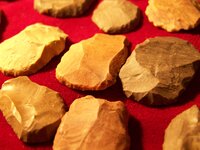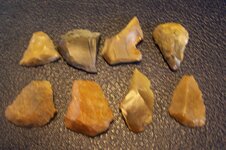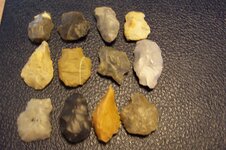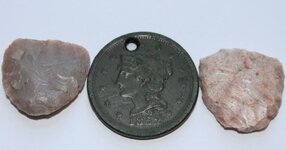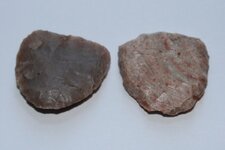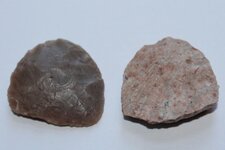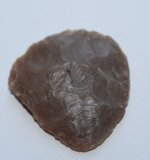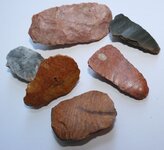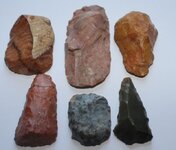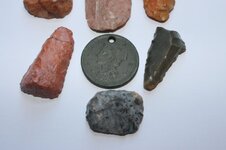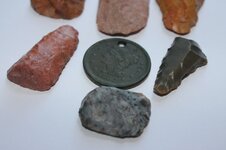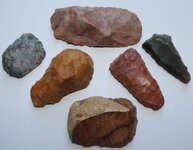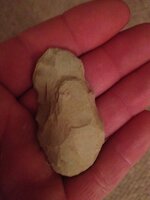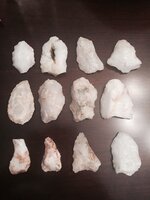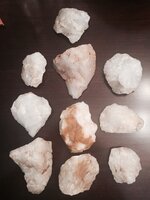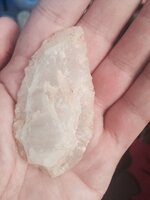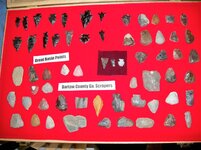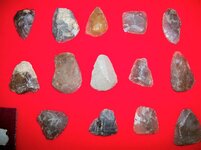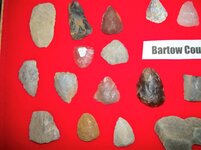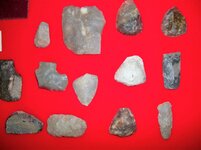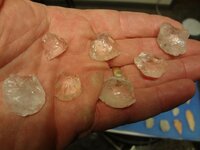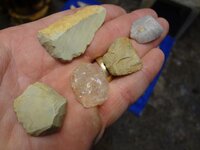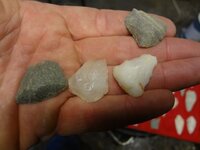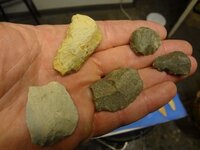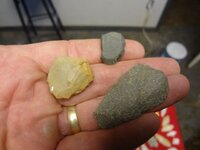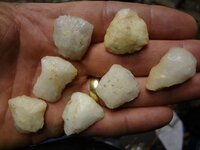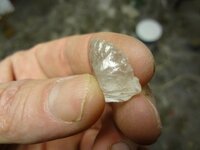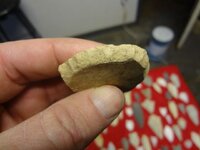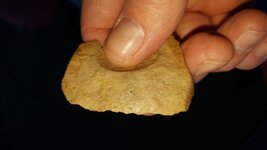Navigation
Install the app
How to install the app on iOS
Follow along with the video below to see how to install our site as a web app on your home screen.
Note: This feature may not be available in some browsers.
More options
You are using an out of date browser. It may not display this or other websites correctly.
You should upgrade or use an alternative browser.
You should upgrade or use an alternative browser.
Post Your Thumb Scrapers if you have some
- Thread starter Tnmountains
- Start date
birdpointgriswold
Hero Member
theviking said:How about some Crystal Quartz
Beautiful I find crystal quartz quite often and I save every piece
Johnathan Griswold
Amazon Forum Fav 👍
Charmin
Bronze Member
- Sep 3, 2007
- 2,284
- 281
- Detector(s) used
- White's Prizm III and Ace 250
- Primary Interest:
- All Treasure Hunting
- Jan 27, 2009
- 18,792
- 11,909
- 🥇 Banner finds
- 1
- Detector(s) used
- Tesoro Conquistador freq shift
Fisher F75
Garrett AT-Pro
Garet carrot
Neodymium magnets
5' Probe
- Primary Interest:
- All Treasure Hunting
- Thread starter
- #45
Wow. What a bunch of great examples. I do not even know what to say. Wonder how many we have missed over have in our flint buckets. Makes me want to go back over all those flakes I bring home.
So I am guessing from Paleo and earlier to time of contact this was an every day tool?
So I am guessing from Paleo and earlier to time of contact this was an every day tool?
Last edited:
- Jan 27, 2009
- 18,792
- 11,909
- 🥇 Banner finds
- 1
- Detector(s) used
- Tesoro Conquistador freq shift
Fisher F75
Garrett AT-Pro
Garet carrot
Neodymium magnets
5' Probe
- Primary Interest:
- All Treasure Hunting
- Thread starter
- #46
Scrapers found in July and August.
I picked up 4 tonight.
July and August?? Wow!! So your site was making these a lot and it was a buffalo culture? Meat?
Age_old
Sr. Member
- Jul 30, 2012
- 316
- 63
- Detector(s) used
- Bounty Hunter
- Primary Interest:
- All Treasure Hunting
NC field hunter
Silver Member
- Jul 29, 2012
- 4,227
- 1,626
T Witko said:The pertrified wood one is one of my favorites.
You find the prettiest transparent stuff I've ever seen. I've got to tell you, when I read your post, I picture you as your avatar pic. Don't know why. But, that is a compliment , and I mean that.
larson1951
Silver Member
You find the prettiest transparent stuff I've ever seen. I've got to tell you, when I read your post, I picture you as your avatar pic. Don't know why. But, that is a compliment , and I mean that.
i agree with you NC,
that is the original Twitko in his avatar, chief fool bear
twitko is one of my best friendds
he works to help take care of the site we hunt which is owned by our friend
then he gets his chokecherry flippin' stick and scores with it almost every day
T Witko
Sr. Member
You find the prettiest transparent stuff I've ever seen. I've got to tell you, when I read your post, I picture you as your avatar pic. Don't know why. But, that is a compliment , and I mean that.
Thanks. Here is some Tatanka Witko info.
In the early 70's I purchased a box of "stuff" at an auction and one of the items in it was an American Indian painting done on muslin depicting some kind of dance or ceremony with Tatonka Witko printed on it. This some of the info I've been able to find about him.
There is an attached document with more photos and additional info.
http://www.treasurenet.com/forums/a...71984-indian-chief-photos-fool-bull-tnet-.doc
Fool Bull, "Tatanka Witko", Brule Sioux Medicine Man (1844-1909)
Fool Bull, medicine man and warrior, holds his painted buffalo hide shield, which he carried in the Battle of Little Bighorn and a horse of the Dog Soldier Society. His shield may be an actual old war shield, it at least has a buckskin cover and not a muslin one like so many created during this period. Across his lap is a serrated whip made from a section of milled board, which he is holding by a fox or coyote skin wrist strap. This whip could have been related to his status as a Grass Dance whip man or to his membership in a warrior society. His claw necklace seems to be made of claws made from some material such as hoof or antler.
Photograph by John A. Anderson, 1900
There are some more photos in my reply in this thread
http://www.treasurenet.com/forums/american-indian-artifacts/169237-indian-chief-photos.html
Last edited:
flintdigger
Bronze Member
- Jul 15, 2010
- 1,242
- 206
Very interesting photo.
pickaway
Bronze Member
- Nov 1, 2011
- 1,174
- 940
- Detector(s) used
- ace 400
- Primary Interest:
- All Treasure Hunting
Glad to see someone from Florida knows what a uniface scraper is..."Thumbscraper" sounds painful! Here is a thumbnail scraper from Florida. The "thumbnail" is the large, flat area on the convex side of the scraper. This flat area is the untouched remainder of the exterior of the thick flake after the edges have been sharpened by pressure flaking.Purdy includes these uniface tool among the larger category of "blunt-nose end scrapers." These tools, she suggests, are part of the Late Paleoindian toolkit, and they have been reported from the Late Paleolithic of Europe. The book example comes from a Florida site with mixed Archaic and Late Paleo lithics. Purdy does not provide the dimensions of her figured example, but I have offered the measurements of one example in my collection.
NC field hunter
Silver Member
- Jul 29, 2012
- 4,227
- 1,626
- Jan 27, 2009
- 18,792
- 11,909
- 🥇 Banner finds
- 1
- Detector(s) used
- Tesoro Conquistador freq shift
Fisher F75
Garrett AT-Pro
Garet carrot
Neodymium magnets
5' Probe
- Primary Interest:
- All Treasure Hunting
- Thread starter
- #54
Goooood morning Artifact hunters!
I awoke and was going through some things and googled thumbnail scrappers. Guess where it brought me? Coffee is brewing. Was wondering in context when earliest examples show up?
Have a great day with an old post from the past that sits still on top of Google searches. See some old dear friends we all miss on here.
HH
TnMtns
I awoke and was going through some things and googled thumbnail scrappers. Guess where it brought me? Coffee is brewing. Was wondering in context when earliest examples show up?
Have a great day with an old post from the past that sits still on top of Google searches. See some old dear friends we all miss on here.
HH
TnMtns
willjo
Bronze Member
- Apr 30, 2015
- 1,070
- 2,022
- Detector(s) used
- Garrett GTA 350 and Garrett ace 150
- Primary Interest:
- All Treasure Hunting
redbeardrelics
Hero Member
- Jan 3, 2014
- 891
- 1,024
- Detector(s) used
- Garrett GTI 2500, (Ace 250 spare)
- Primary Interest:
- Other
Hey Tnmountains, thanks for bringing this older post back to life, it was started before my time on tnet and I had not seen it before. I find it interesting that "thumbnail" may be in reference to a thumbnail size flat spot on the convex face of the scraper. I had always assumed that it was more in reference to tools that would do jobs that were originally done with thumb and fingernails? Most of the sites I hunt are multi-componenet, but I do seem to get the impression that these type scrapers are more prevalent on mid-archaic era sites here on the Delmarva peninisula, for what that's worth.
Top Member Reactions
-
 3461
3461 -
 2058
2058 -
 1968
1968 -
 1164
1164 -
 1109
1109 -
 926
926 -
 831
831 -
 810
810 -
 807
807 -
 789
789 -
 747
747 -
 529
529 -
 480
480 -
 475
475 -
 445
445 -
 423
423 -
E
416
-
 416
416 -
 416
416 -
 392
392
Users who are viewing this thread
Total: 3 (members: 0, guests: 3)
Latest Discussions
-
-
-
They want half of the treasure because they are the reason for knowing the place.
- Latest: Treasure_Hunter
-
-

